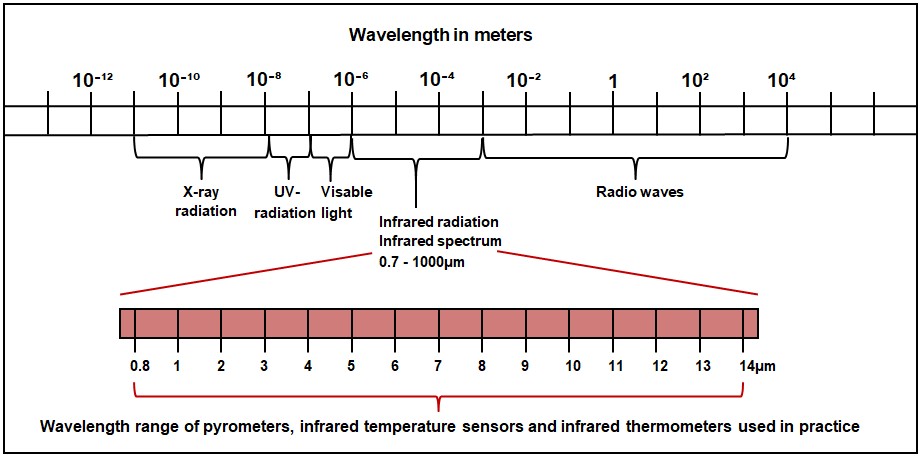Heat radiation is a process in which an object emits heat in the form of electromagnetic radiation.
This happens due to the temperature of the object, the higher the temperature, the more heat is emitted. The electromagnetic radiation generated during heat radiation is in the infrared range of the electromagnetic spectrum.

Planck’s law of radiation states that the intensity of the emitted electromagnetic radiation is proportional to the fourth potency of the object’s temperature. This means that an object radiates significantly more heat at higher temperatures than at lower temperatures. The radiated heat will be absorbed by other objects in the vicinity, which can cause these objects to heat up.
The measurement of heat radiation in practice
In practice, thermal radiation can be measured using an infrared pyrometer or a thermal imaging camera. Infrared pyrometers are measuring devices that measure the infrared radiation emitted by an object. This radiation is then converted into a temperature value by the pyrometer and output as a digital or analog output signal.
Applications of heat radiation measurement
Measuring and visualizing the thermal radiation of objects has many practical applications in industry and research.
Some of these applications are:
Temperature measuring:
Stationary infrared pyrometers and portable infrared thermometers are often used to measure the temperature of objects without contact. This is particularly useful if the object to be measured is very hot or difficult to access or reach.
Building thermography:
Infrared cameras can be used to measure the temperature distribution in a building. This technology is often used to identify energy losses from building elements and improve the energy efficiency of buildings.
Industrial process control and quality assurance:
Infrared pyrometers can be used to monitor the temperature in industrial processes. This is particularly important in the production of food, pharmaceuticals and chemicals, where temperature is an important factor for the quality and safety of the final product.
Material testing:
The measurement of thermal radiation can also be used to measure the properties of materials. For example, the thermal radiation of metals in machining and hardening processes can be measured to determine their hardness and strength.
Medical applications:
Portable infrared thermometers can also be used to measure the body temperature of patients. This is particularly important in the diagnosis of infections and fever.




















